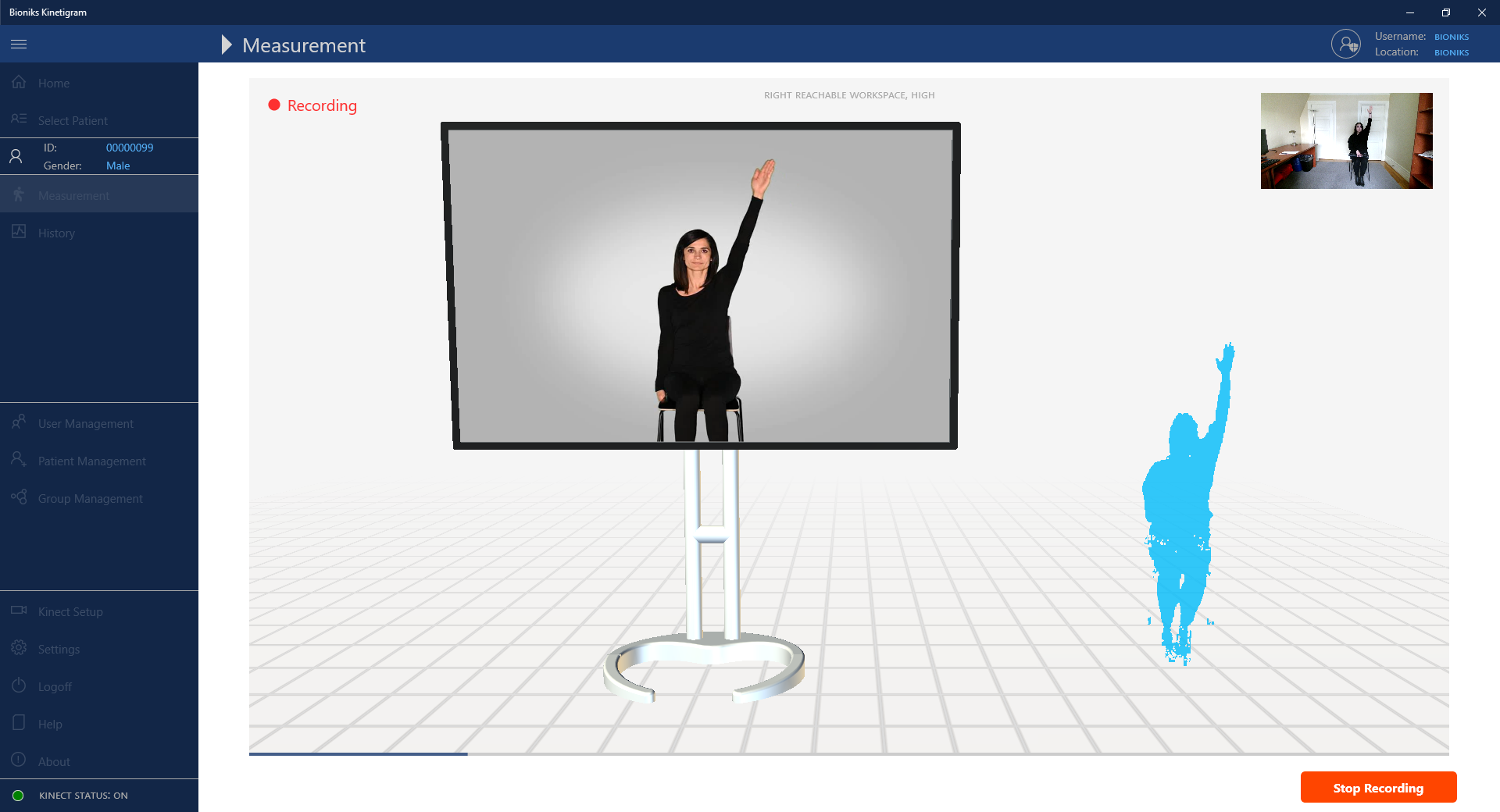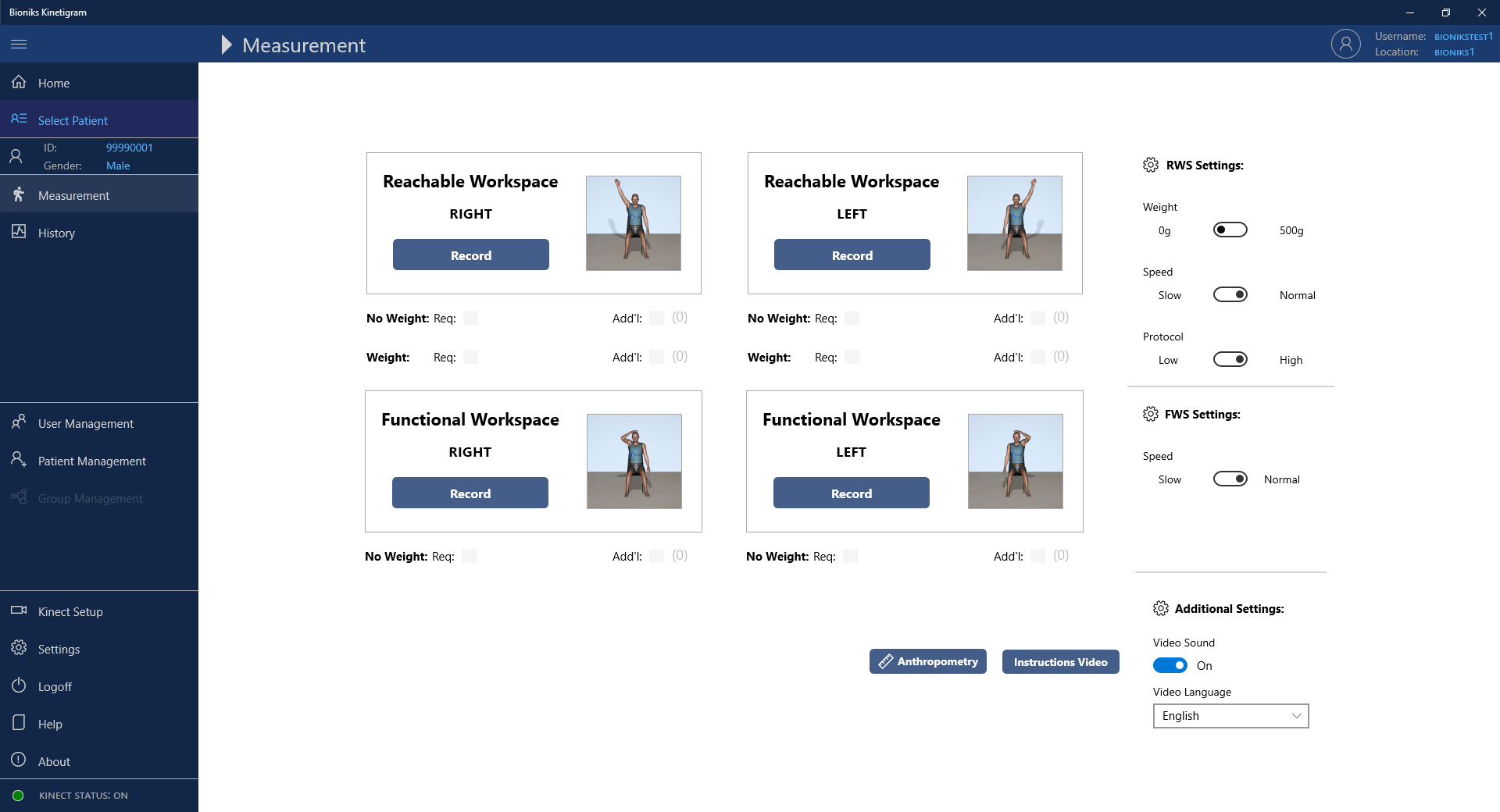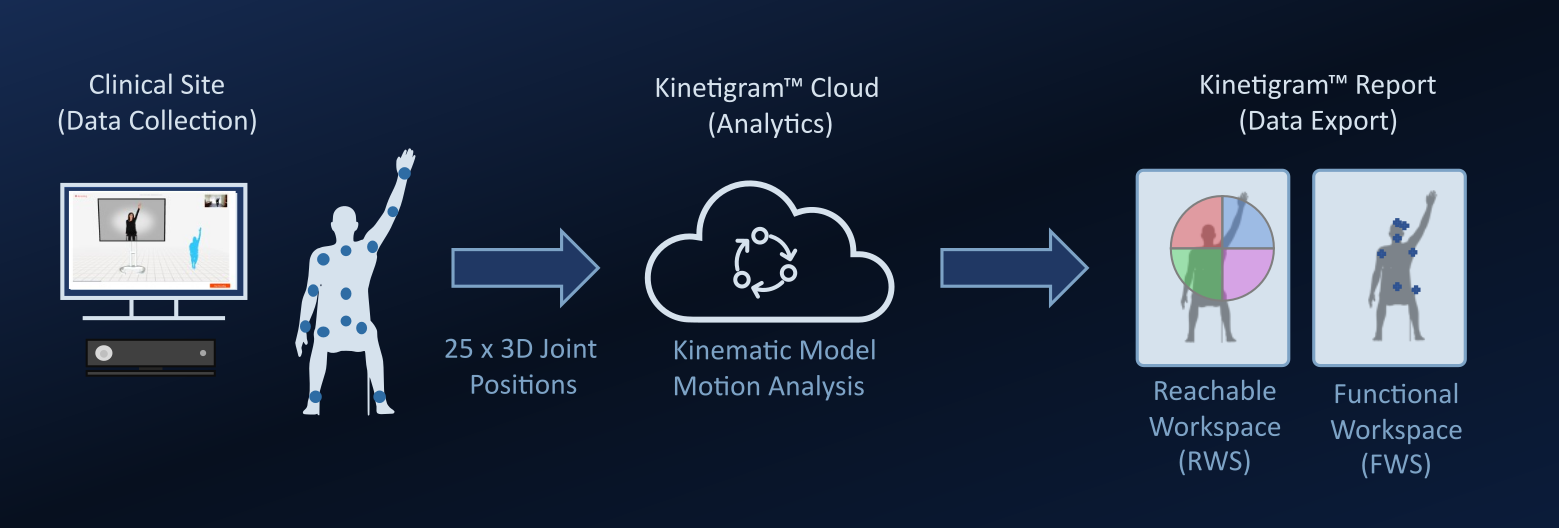KINETIGRAM™
Kinetigram™ Version 2
Kinetigram is a generalized platform for analysis of 3D human body motion. Current release (Version 2) of the FDA-registered and CE-marked Kinetigram™ includes an upper extremity module and incorporates controlled audio-visually guided data acquisition and secure cloud storage that allows for geographically distributed clinical sites to easily and securely collect kinematic motion data. The motion data are processed on the Bioniks cloud platform to provide clinical outcome scores for the upper extremity.


The Kinetigram™ Platform
The Kinetigram™ platform implements two major upper-extremity assessment protocols:
- Reachable Workspace (RWS) to assess the limits to gross range of motion of the shoulder; and
- Proximal Functional Workspace (FWS) to assess an individual's ability to reach with their hand at various body landmarks.
The use of instructional videos that the patient follows ensures consistent performance and timing between trials. Kinetigram™ includes protocol videos and user interface in 10 different languages (English, GB English, Dutch, German, Spanish, US Spanish, French, Canadian French, Italian, and Danish).
Kinetigram™ cloud-connected application is compatible with Microsoft Kinect™ depth camera that captures patient’s motion. Bioniks improves on the raw skeletal data by introducing an individualized kinematic filtering based on the biomechanical model of the patient’s upper body.
Reachable Workspace Assessment
For the Reachable Workspace assessment, patient is asked to move their extended arm in vertical and horizontal planes at various angles based on given video instructions. The upper extremity motion in the shoulder joint is summarized by the reachable workspace envelope. The envelope is divided into four quadrants in front of the body (Q1-Q4) and an additional fifth quadrant (Q5) for the back extension of the arm. Clinical outcome scores include information on the extent of each quadrant and the total area of motion.
Functional Workspace Assessment
For the Functional Workspace assessment, patient is instructed to reach the seven body landmarks in a sequential order (e.g., hip, back pocket, shoulder, opposite shoulder, mouth, top of the head, and back of the head). The landmarks include areas of the body that are typically reached for in daily activities, such as grooming, feeding, and combing hair. The Kinetigram™ application records the motion as well as evaluators’ observations, whether the patient was able to reach the landmark with their fingertips or not. The algorithm further analyzes the motion of the wrist and provides scaled proximity scores for the seven landmarks to assess how close the patient reached towards the target.
Kinetigram Analysis

The device can be used for tracking patients with disorders that affect the upper extremity, such as neuromuscular diseases, post-stroke patients, patients recovering from injury, patients after shoulder surgery and breast cancer surgery. In case of muscular weakness, neuro-muscular impairments, or pain, patient may not be able to raise their arm or reach specific areas. Individual use or combination of the two protocols may serve to monitor these changes in performance by augmenting current clinical evaluations.
Indications For Use
The Kinetigram™ is Software as a Medical Device (SaMD) intended to be used with the Microsoft Kinect for Xbox One to evaluate upper extremity joint function using 3D kinematic data capture in adults. The product is intended for use by medical professionals amongst other available patient parameters as a motion analysis tool.
More Information